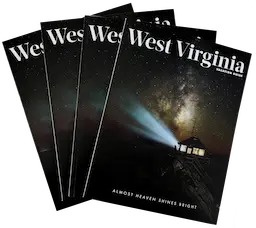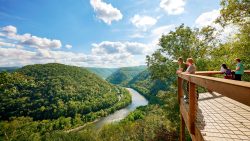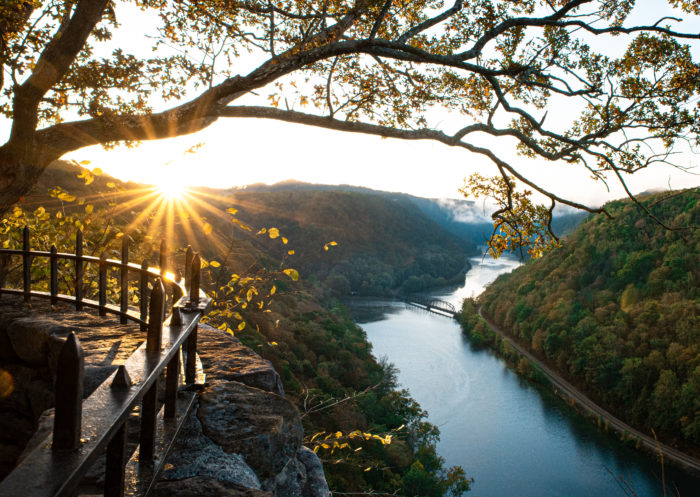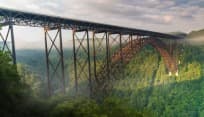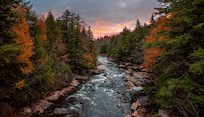Hit the history trail: 4 West Virginia road trips with heart
Planning your summer road trip? These fascinating trails might pique your interest in West Virginia’s rich culture and history. Download a map or brochure of these historic trails and explore by region … or spend all summer visiting the sites throughout the state!
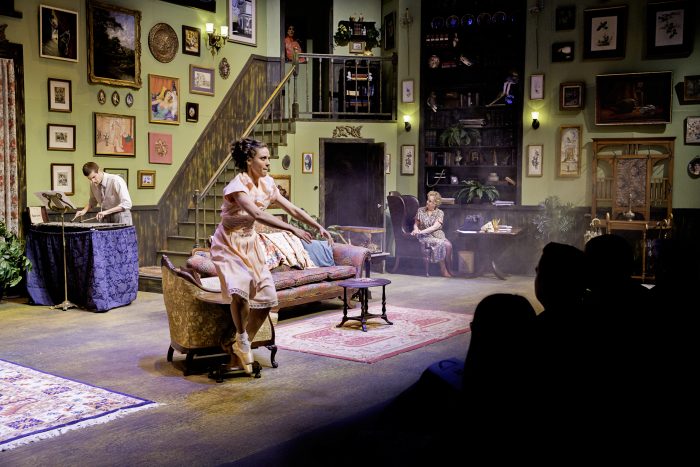 1. West Virginia Historic Theatre Trail
1. West Virginia Historic Theatre Trail
The West Virginia Historic Theatre Trail encompasses a diverse mix of drive-in movie theaters, playhouses, arts centers and indoor movie theaters dating back to the turn of the 20th century. A few of them have ceased operation, but most are still in use and have been fully restored to capture the era in which they were built.
You’ll learn about record-holders like the Robey Theatre in Spencer. Built in 1911, it was one of the first theaters in the country to show silent films. The Robey has been remodeled and expanded over the years, but it still retains its original charm. Having long since converted to “talkies,” the Robey shows movies 364 days a year and is the longest continuously operating theater in West Virginia.
Other theaters have famous connections, like the Metropolitan Theatre in Morgantown, hometown of Emmy Award-winning actor Don Knotts. The Met opened in 1924 as a vaudeville house—the year of Knotts’ birth. Later, as a young man, he cut his acting teeth onstage at the Met. Today, a statue of the actor, best known as Deputy Barney Fife, rests on a bench outside the Met.
Then there are unique venues like the grand old Carnegie Hall—one of only four Carnegie Halls in the world built with funds from steel baron and philanthropist Andrew Carnegie. The Greek Revival structure was completed in 1902 and originally provided classroom and storage space for the Lewisburg Female Institute (later renamed Greenbrier College for Women). Since 1983, Carnegie Hall has served the Greenbrier Valley as a theater for visual and performing arts
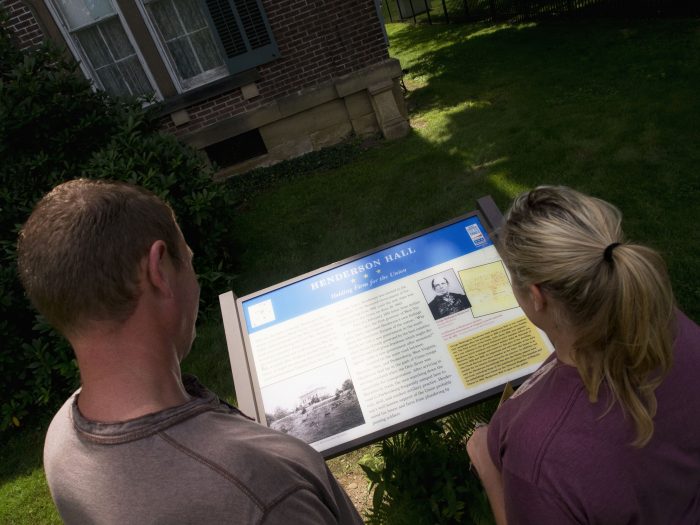 2. Civil War Trails
2. Civil War Trails
More than 150 sites throughout West Virginia have been included in the five-state Civil War Trails network. These historic homes, battlefields, and other sites are marked with interpretive signs detailing the key role they played in the war between the states.
These sites include Organ Cave, where Confederate soldiers mined saltpeter to make gun powder, and the Philippi Covered Bridge, which was used by both Union and Confederate troops after the Battle of Philippi—the first land battle of the Civil War.
Two battles that were key victories for the Union army have been preserved at Carnifex Ferry Battlefield State Park and Droop Mountain Battlefield State Park. Both day-use parks are popular picnic spots known for their scenic overlooks as well as their historical significance.
Along this trail you’ll also see the building in Wheeling that played a crucial role in the formation of West Virginia. Originally called the Wheeling Custom House, the three-story stone building later served as the capitol for the Reorganized Government of Virginia after attendees at the Second Wheeling Convention in 1861 declared the Confederate state government in Richmond illegal and called for Virginia’s western counties to form a new state. Now called West Virginia Independence Hall, the building houses a museum dedicated to West Virginia’s statehood and the Civil War.
3. Washington Heritage Trail
Forming a 136-mile loop through the Eastern Panhandle, the Washington Heritage Trail captures the area’s natural and cultural history that includes 18th century towns, 19th century industrial sites, and loads of scenic beauty.
The area boasts numerous connections to first U.S. president George Washington, from the warm mineral waters of what is now known as Berkeley Springs State Park, where the young surveyor once frequented, to the stately visage of Happy Retreat, the family home of George’s younger brother Charles, the founder of Charles Town.
Industrial contributions to the trail include the Martinsburg Roundhouse Center, which once serviced the B&O Railroad and is the only remaining roundhouse of its kind; and the 75-foot James Rumsey Monument overlooking the Potomac River—a nod to the pioneer of the steamboat.
The trail offers scenic views like Jefferson Rock at Harpers Ferry, named after President Thomas Jefferson, who once stood on the rock and marveled at the beauty of the Potomac and Shenandoah rivers below.
4. United States Civil Rights Trail
The United States Civil Rights Trail links 130 landmarks throughout 12 southern states, from the former Sumner Elementary School in Topeka, Kansas that made history in the Supreme Court decision Brown v. Board of Education to the Lincoln Memorial in Washington D.C., where Dr. Martin Luther King Jr. delivered his famous “I Have a Dream” speech. Three Civil Rights sites have been established in West Virginia:
The Elizabeth Harden Gilmore House in Charleston memorializes the civil rights leader who led efforts to integrate schools, housing and public accommodations in West Virginia. Gilmore’s accomplishments include securing the admission of African-American Girl Scouts into the previously segregated Camp Anne Bailey. Her department store sit-in lasted over a year and resulted in the integration of lunch counters in Charleston. The house is not yet open to the public, but efforts are underway to restore it to preserve Gilmore’s legacy.
The Memphis Tennessee Garrison Home in Huntington memorializes the teacher and activist who dedicated her life to improving the lives of African-Americans in West Virginia. She educated miners in the camps of the southern coal fields and was the first female president of the West Virginia State Teachers Association. She also helped organize a new NAACP branch in McDowell County before retiring to her new home in Huntington. Her home is in the process of being converted into a civil rights museum.
Harpers Ferry was the setting for several critical events that contributed to the civil rights movement. It was here where famed abolitionist John Brown captured the arsenal in 1859. Forces led by then-Col. Robert E. Lee put an end to Brown’s plans, but it’s said by many historians that this was the spark that ignited the Civil War. The fort and other sites are preserved in Harpers Ferry National Historical Park. The iconic overlook of Harpers Ferry where it sits at the confluence of the Potomac and Shenandoah rivers can be viewed from Maryland Heights—site of the first battle between Union and Confederate troops.
Which history trail will you be exploring?
Find more historyThis post was last updated on March 1, 2022
